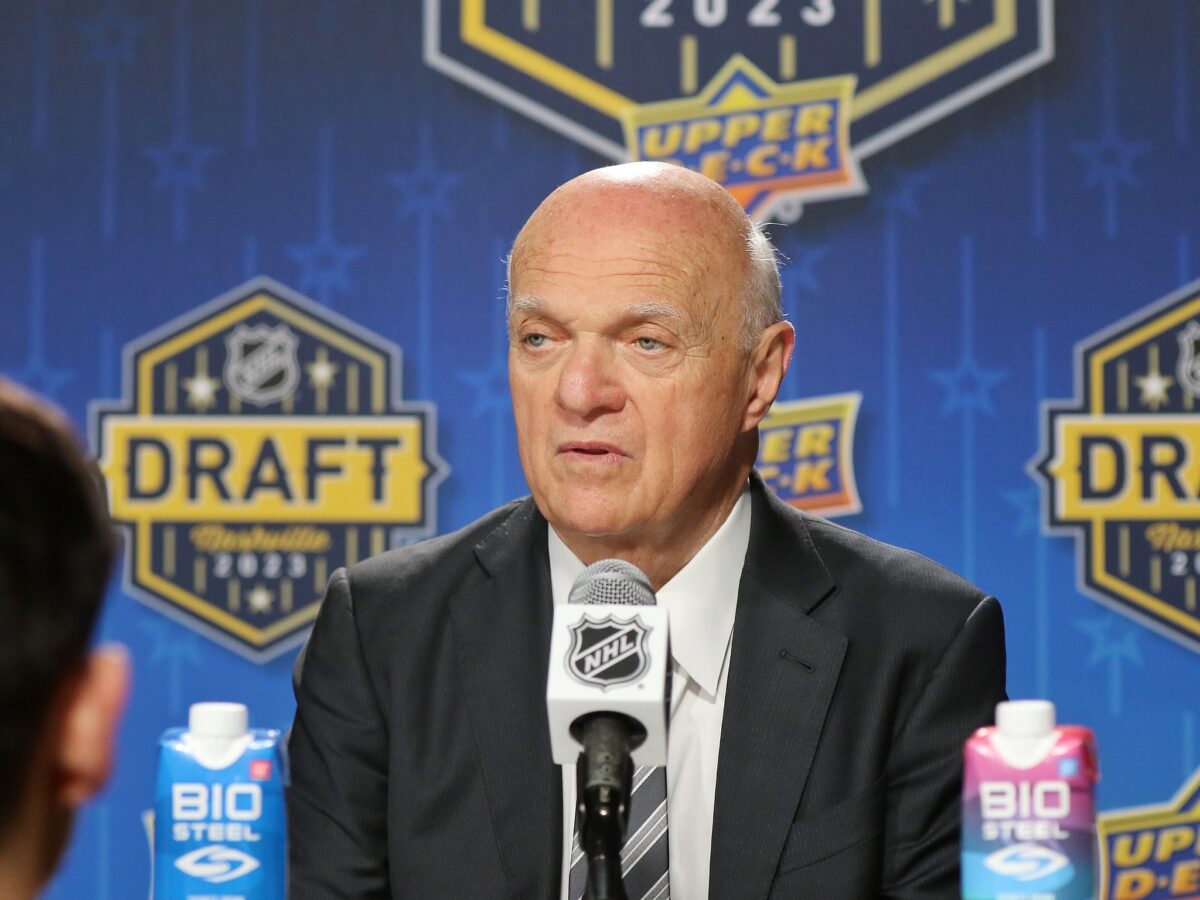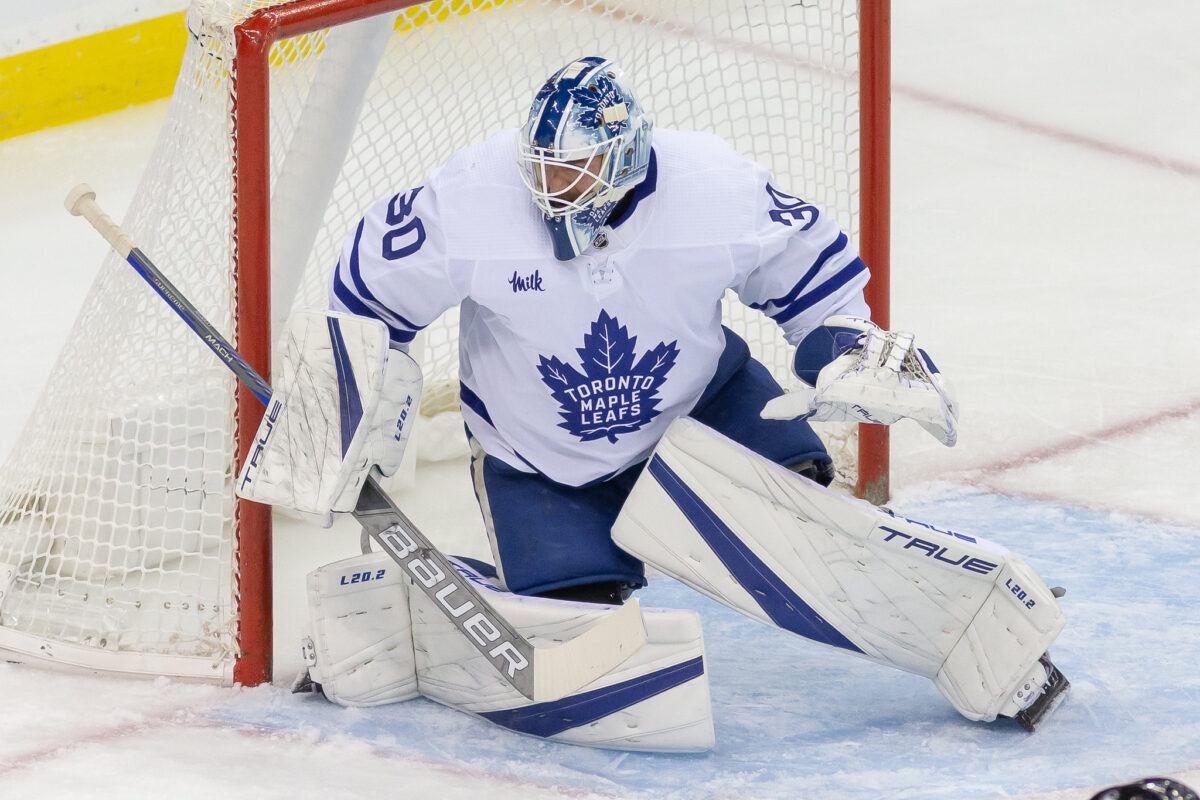The NHL’s general managers (GMs) meet multiple times annually to discuss the state of the game. These meetings are typically started by a senior group including managers such as Doug Armstrong, Lou Lamoriello, and others, and are then brought to the rest of the GMs to discuss what further action should be taken. While the rules and regulations of the collective bargaining agreement (CBA) can’t be changed, the NHL’s rulebook and process can be discussed.

Once a decision is made, it is then brought to the Competition Committee & Board of Governors for approval. It was a busy time during the March meetings, and there were plenty of proposed changes brought up.
Immediate Change to Line Change
While it generally takes some time for these rules to come into effect, the GMs have decided that after a referee was injured by a skate, they would be making a change to the rule on players getting ready for a change on the fly.
Related: Armstrong & Getzlaf to Lead Hockey Canada Into 2026 Olympics
A player waiting for their teammate to get to the bench for a line change typically hangs a leg over the boards to get ready to get on the ice as soon as possible. A referee skating by was cut by a skate of a player doing this, so they will no longer be able to have a leg over the boards. If a player is seen waiting like this, they will be given a warning, and if it happens again that game, they will be given a two-minute bench minor penalty.
Sign up for our NHL Prospects & Draft Substack newsletter
While it seems like a pretty minuscule change, it will take a lot of getting used to for players who have been doing this since they were playing minor hockey.
New Faceoff Rules/Locations Proposed
While violations are hard to see from the broadcast, we do see a lot of players get warnings or tossed from taking a face-off. After an icing, the defending player can have one fault, receiving a warning, while the offensive center does not get a warning and will get removed from the face-off after one fault.
On occasion, it is seen that a team will play a puck with a high stick or hand-pass, and when the puck drops they refuse to touch it to avoid a face-off and kill time on the clock. Now, if a player refuses to play the puck in this scenario, the whistle will blow and the non-offending team will get an advantage with the following face-off, with the puck being dropped in the face-off dot in the next zone closer to the opponent’s net. For example, if this play happens in one team’s defensive zone and the offensive team does this, the face-off will come in the neutral zone, and if it happens in the neutral zone, it will be in the offending team’s defensive end.
Goaltending Warmup and Penalties
Right now, when a goaltender is coming into play in the middle of a game, regardless of the reason, they are put into the net without facing a single puck and don’t get a warmup. Now, a proposed change is that when a goalie is taken out of the game by an injury or concussion spotter, the goalie entering the game will get the opportunity to warm up. This will not apply to goalies coming in to relieve another based on their play and is just related to injuries.

Another, which could be called the “Matt Murray Rule“, is that if a goaltender is suspected to have removed the net from its moorings intentionally, they can be assessed a delay of game penalty. A defending player can be assessed this penalty for this infraction, but not a goaltender. The GMs want to see punishment for a goalie doing it.
Changes to Coach’s Challenge
The NHL has adapted the Coach’s Challenge, specifically for offsides and goaltender interference, but also more like a missed stoppage from the puck leaving the boundaries of the ice surface or a hand-pass. The GMs have proposed two new options for a challenge. While watching the referees check for millimeters and pixels can be boring, these two changes make sense.
First of all, high-sticking penalties can only be reviewed if they are double-minor or major penalties. Even if the review shows that it in fact wasn’t the suspected player, they still receive the penalty that was originally called and serve a minor penalty. With this proposal, the GMs want to be able to review any high-sticking penalty, specifically for friendly fire. We have seen it countless times, a player is hit in the face by a teammate’s stick and the closest opposing player gets the penalty. Now, the coach will be able to challenge and show that it is wrong.
Another new challenge is that if a team is given a delay of game penalty for shooting the puck over the glass in the defensive zone, it can be challenged to prove it had been deflected off of anything, whether it be another stick, player, or the glass.
The risk with these challenges is significant. If a coach decides to challenge one of these and gets it wrong, they are given the original penalty as well as another penalty for the failed challenge, resulting in a full two-minute 5-on-3 penalty kill.
As a result, video coaches may become significantly more important to a team’s coaching staff.
Again, most of these are just proposals, but many are likely to be approved at a later date and will be in effect for the start of the 2024-25 season.
